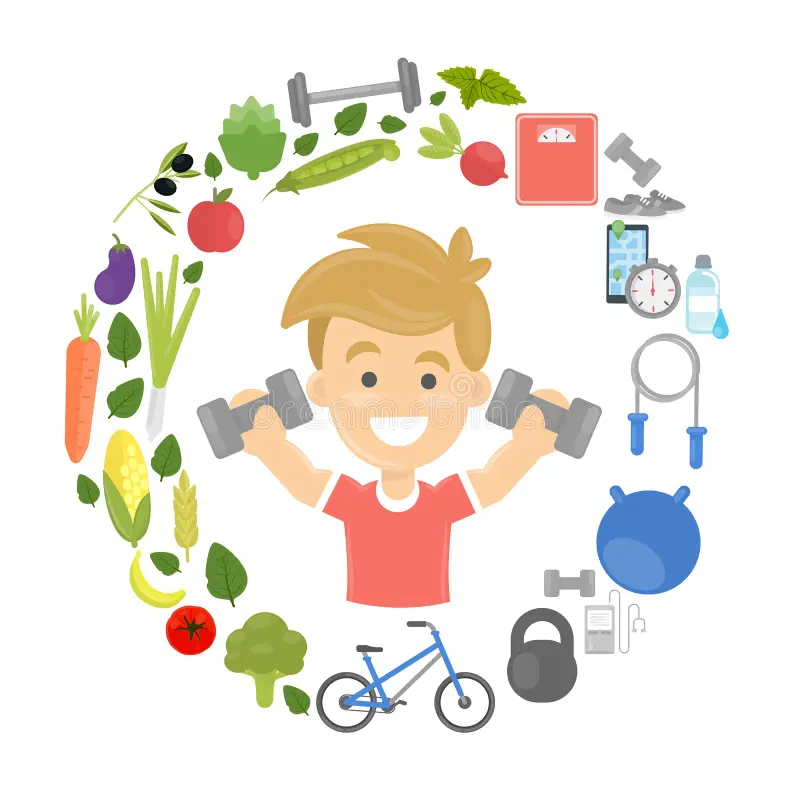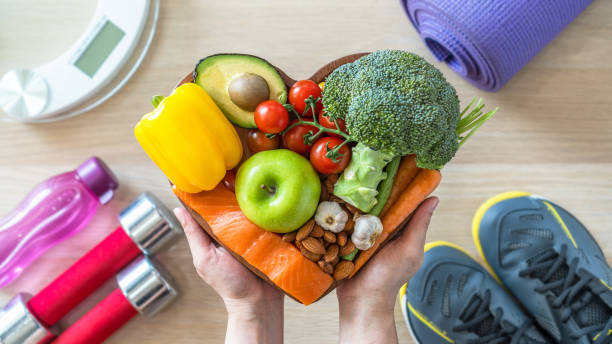🌲🚴♀️🏊♂️🌞 Ready for some outdoor fun? Discover 15 thrilling activities that'll boost your fitness level and ignite your adventurous spirit! 🌟 Don't miss out! Read the full article now and let the excitement begin! 🎉📚🌈
Updated at: 2025-07-17 11:18:43 (2 months ago by Melkisedeck Leon Shine)
```html
15 Engaging Outdoor Fitness Adventures for Enhanced Well-being
Are you seeking a departure from conventional gym routines and yearning for a fitness regimen that is both invigorating and adventurous? It's time to abandon the monotony of the treadmill and immerse yourself in the splendor of the great outdoors. This discourse delves into fifteen exhilarating activities meticulously crafted to rejuvenate your workout, all while enveloping you in the captivating allure of nature. Prepare to secure your footwear, apply sun protection, and embark on a transformative odyssey toward a healthier and more intrepid version of yourself.
The premise of outdoor fitness aligns seamlessly with the principles of **holistic wellness**, which emphasizes the interconnectedness of physical, mental, and emotional health. Engaging in outdoor activities not only enhances physical fitness but also provides opportunities for stress reduction, mental clarity, and social interaction.
1. Hiking: Mastering Terrains, Elevating Fitness: Hiking transcends a mere scenic amble; it constitutes a comprehensive bodily workout ingeniously veiled as an exploration of nature's marvels. Whether you elect to surmount formidable mountain peaks or indulge in a leisurely nature promenade, hiking cultivates fortitude, endurance, and bestows breathtaking panoramic vistas. The diverse terrains proffer boundless avenues for physical and mental revitalization.
Applying the principles of **progressive overload**, hikers can gradually increase the intensity and duration of their hikes to continually challenge their bodies and improve their fitness levels. Furthermore, varying the terrain and elevation can engage different muscle groups and enhance overall strength and endurance.
2. Cycling: Pedaling Towards Enhanced Well-being: Embark on an exploration of your environs at your preferred velocity, embracing the unadulterated delight of cycling. This low-impact activity is ideally suited for solitary adventurers or communal expeditions, affording you the opportunity to expend caloric energy while luxuriating in picturesque landscapes. Deliberate routes that guide you to concealed treasures, quaint cafes, or panoramic overlooks, thereby engendering a genuinely enriching experience.
Strategic route planning, a core concept in logistics and operations, is essential for maximizing the benefits of cycling. By mapping out routes that incorporate varying terrains and points of interest, cyclists can enhance their physical conditioning while also enjoying the aesthetic and cultural aspects of their surroundings. Remember you can also plan your finances for this activity as described on Pricing Strategies: A Small Business Guide to Increased Profitability. Even as a sport, you have to manage costs!
3. Rock Climbing: Ascending to New Apexes, Both Literally and Figuratively: Assess your boundaries and defy gravity through the pursuit of rock climbing. This rigorous activity fortifies muscles, hones mental acuity, and nurtures problem-solving proficiencies. Indoor climbing facilities furnish a regulated milieu for novices, whereas outdoor climbing bestows an unparalleled sense of triumph against the backdrop of nature's grandeur.
Rock climbing is an excellent application of **skill-based learning**, requiring individuals to develop and refine their physical and mental skills through deliberate practice and repetition. The sense of accomplishment derived from conquering a challenging climb can also boost self-esteem and promote a growth mindset.
4. Stand-Up Paddleboarding (SUP): Discovering Equilibrium on Water: Embrace the placidity of the aquatic realm while engaging your core and ameliorating equilibrium through stand-up paddleboarding. Traverse across lakes, rivers, or oceans, reveling in the soothing cadence of paddling and the prospect of encountering wildlife. It constitutes a distinctive holistic bodily workout that amalgamates fitness with tranquility.
The principles of **fluid dynamics** play a crucial role in stand-up paddleboarding, as understanding how water flows around the board can help paddlers improve their efficiency and stability. Additionally, the practice of mindfulness, which involves focusing on the present moment, can enhance the overall experience and promote mental well-being.
5. Kayaking: Propelling Towards Serenity and Physical Fitness: For a more serene aquatic escapade, kayaking extends a gentle yet efficacious workout. Paddling bolsters your upper physique while affording a tranquil respite from the quotidian grind. Explore placid waterways, rivers, or even littoral expanses, savoring the tranquility and the gentle cadence of the paddle.
Kayaking can be viewed through the lens of **ergonomics**, as the design of the kayak and paddle can significantly impact the paddler's comfort and efficiency. Choosing equipment that is tailored to one's body size and paddling style can help prevent injuries and maximize performance.
6. Outdoor Yoga: Synchronizing with Nature's Cadence: Merge fitness and mindfulness through the practice of outdoor yoga. The invigorating air, natural illumination, and serene environs amplify the merits of yoga, culminating in a genuinely restorative practice. Locate a tranquil locale in a park, beach, or forest, and permit nature to orchestrate your respiration and movement.
Outdoor yoga exemplifies the principles of **environmental psychology**, which explores the relationship between humans and their environment. Studies have shown that exposure to nature can reduce stress, improve mood, and enhance cognitive function, making outdoor yoga a particularly beneficial practice. You can combine it with the Self-Care Essentials: A Guide to Prioritizing Your Well-Being for an optimum healthy living.
7. Trail Running: Intensifying Your Run with Innate Hurdles: Exchange the treadmill for the trail and encounter running in an entirely novel dimension. Trail running cultivates cardiovascular fitness and leg strength while furnishing a scenic, perpetually evolving environment. However, remember that suitable footwear and hydration are indispensable.
Trail running requires an understanding of **risk management**, as runners must be aware of potential hazards such as uneven terrain, wildlife encounters, and changing weather conditions. Proper planning, including wearing appropriate gear and carrying necessary supplies, can help mitigate these risks.
8. Outdoor Bootcamp: Synergizing Fitness in the Open Air: Assemble your companions and orchestrate your own revitalizing outdoor bootcamp. Devise a circuit incorporating exercises such as burpees, squats, and push-ups, harnessing natural impediments for a jovial, challenging, and galvanizing group workout. The communal experience augments the holistic fitness odyssey.
Outdoor bootcamps often incorporate principles of **behavioral economics**, such as social facilitation, which suggests that people tend to perform better when they are in the presence of others. The camaraderie and friendly competition of a group workout can enhance motivation and adherence to the fitness program.
9. Beach Volleyball: Melding Sunlight, Sand, and Animated Rivalry: Embrace the sun and sand with an exuberant game of beach volleyball. This pleasurable team sport enhances agility, coordination, and introduces a social dimension to your fitness regimen. The amicable competition and picturesque backdrop render this a genuinely delightful activity.
Beach volleyball is a practical example of **team dynamics**, where effective communication, coordination, and cooperation are essential for success. The shared goal of winning can foster a sense of camaraderie and promote positive social interactions.
10. Frisbee Golf (Disc Golf): Accuracy and Adventure in the Park: This singular sport melds the strategy of golf with the amusement of hurling frisbees. Navigate courses through parks and verdant expanses, aiming for targets with your frisbee. It constitutes a jovial and dynamic means of relishing the outdoors and assessing your precision.
Frisbee golf incorporates elements of **game theory**, as players must make strategic decisions about which disc to use and how to throw it in order to optimize their score. The combination of physical activity and mental strategy makes frisbee golf a stimulating and engaging outdoor pursuit.
11. Outdoor Circuit Training: Harnessing Your Environs for a Vigorous Workout: Construct a challenging circuit utilizing park benches, stairs, trees, and other outdoor constituents. Integrate exercises such as step-ups, tricep dips, and pull-ups for a vigorous and captivating holistic bodily workout that capitalizes on your environment.
Outdoor circuit training is a practical application of **functional fitness**, which focuses on exercises that mimic real-life movements and improve overall strength and mobility. By using the environment as a gym, individuals can enhance their physical capabilities in a natural and engaging way.
12. Geocaching: Amalgamating Fitness with Treasure Pursuits: Merge fitness with a playful escapade by indulging in geocaching. Employ GPS coordinates to pinpoint concealed containers (geocaches) in diverse locales. This activity fosters exploration while furnishing a pleasurable means of accumulating steps and unearthing novel locations.
Geocaching can be viewed as an example of **gamification**, which involves using game-like elements to motivate and engage individuals in real-world activities. The thrill of the hunt and the reward of finding a geocache can make exercise more enjoyable and sustainable. Remember that Storytelling for Sales: How Narrative Marketing Boosts Engagement and Drives Growth is a great way to get people involved in this sport.
13. Outdoor Dance Class: Choreographing Your Path to Fitness: Enlist in an outdoor dance class and liberate your spirit! Whether it encompasses Zumba, salsa, or hip-hop, dancing constitutes a superb avenue for enhancing coordination, expending calories, and savoring the vitality of a group setting in the open air.
Outdoor dance classes exemplify the principles of **kinesthetic learning**, which involves learning through movement and physical activity. Dancing not only improves physical fitness but also enhances coordination, balance, and spatial awareness. For more holistic wellness you can check these 7 Essential Self-Care Habits for a Healthier, Happier Life.
14. Tree Climbing: Reconnecting with Your Inner Child: Embrace your adventurous essence through tree climbing. Identify a robust tree and challenge yourself to ascend to the summit, thereby fortifying upper body strength and augmenting self-assurance.
Tree climbing is an excellent example of **experiential learning**, which involves learning through direct experience and reflection. The act of climbing a tree can be both physically challenging and mentally stimulating, fostering a sense of accomplishment and self-discovery.
15. Outdoor Fitness Challenges: Pushing Your Limits with Obstacle Courses: Assess your boundaries by partaking in outdoor fitness challenges such as mud runs or obstacle course races. These events proffer a singular fusion of physical and mental trials in exhilarating settings, thereby bolstering resilience and extending your fitness horizons.
Outdoor fitness challenges often incorporate elements of **sports psychology**, such as goal setting, visualization, and mental toughness. By setting challenging but achievable goals and visualizing success, individuals can enhance their performance and overcome obstacles.
These fifteen activities furnish a rejuvenating substitute for conventional workouts, fostering exploration, communion with nature, and a dynamic social milieu. Thus, venture outdoors, embrace the sunlight, and unlock a novel stratum of fitness and adventure!
Conclusions and Recommendations:
In summation, integrating outdoor fitness adventures into one's lifestyle presents a holistic approach to well-being, capitalizing on the synergistic benefits of physical activity, nature exposure, and social interaction. The activities delineated herein offer a diverse array of options catering to varied fitness levels and preferences, thereby facilitating accessibility and adherence. To maximize the efficacy and sustainability of these endeavors, it is recommended to adhere to the principles of progressive overload, risk management, and mindful engagement. Furthermore, incorporating elements of gamification, social support, and experiential learning can enhance motivation and foster a sense of accomplishment.
For future research, it would be prudent to investigate the long-term impacts of outdoor fitness interventions on physical and mental health outcomes, as well as the influence of environmental factors on exercise adherence and enjoyment. Additionally, exploring the potential of technology, such as wearable devices and mobile applications, to enhance the outdoor fitness experience could yield valuable insights.
The applicability of these recommendations extends to individuals, communities, and organizations seeking to promote health and wellness. By encouraging outdoor fitness activities and creating supportive environments, stakeholders can contribute to the development of a healthier, more active, and resilient society.
Reader Pool:
In what ways can urban planning and community design be leveraged to further promote and facilitate participation in outdoor fitness activities for residents of all ages and abilities?
List of References:
```







